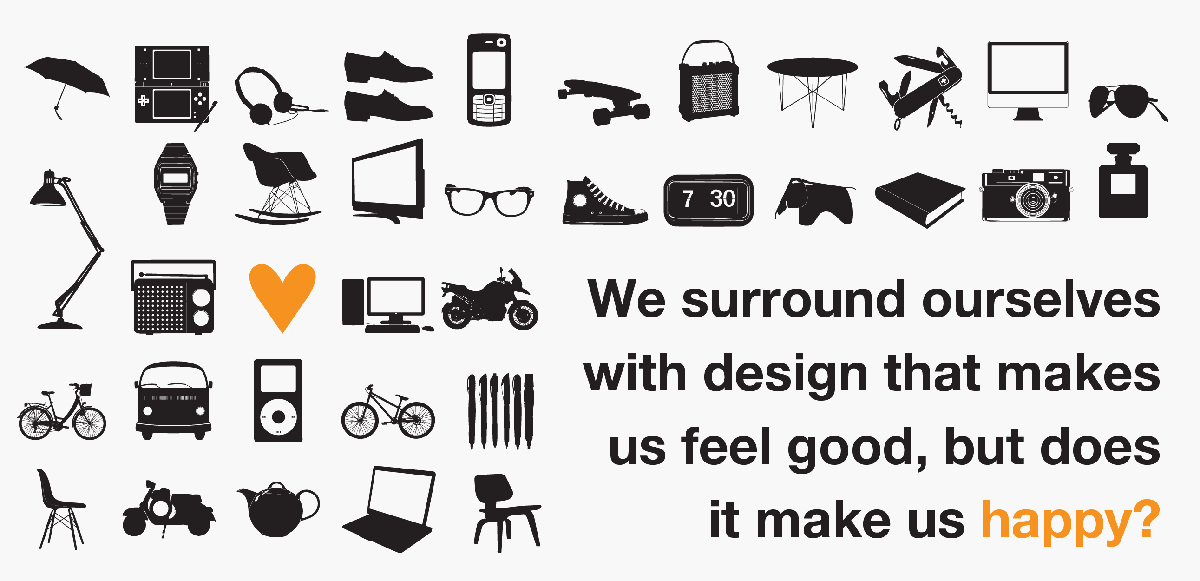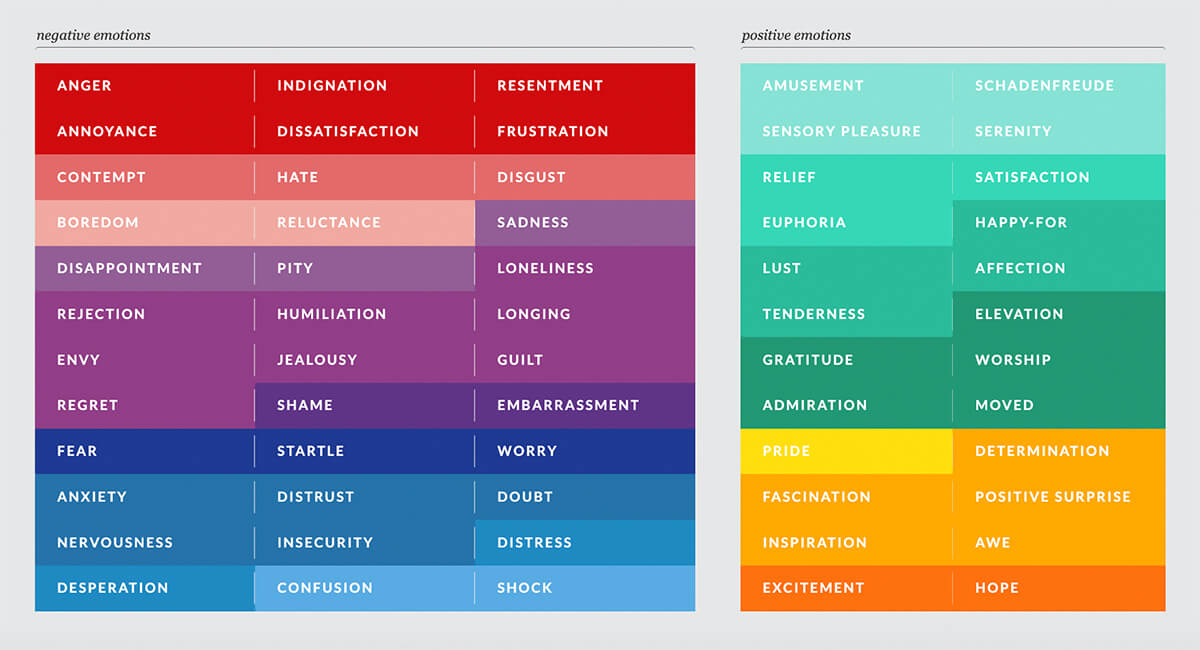
Copyright © DIOPD 2023. (https://diopd.org/)
What is Positive (User) Experience?
Positive UX sounds good! Everyone wants to achieve a positive experience in the context of using products, right? But what exactly does the term mean and how did it come about? Isn’t it already included in User Experience and why is “Positive X” so important?
>> On the one hand, the “X” stands for “Experience” and thus clearly focuses on the experience of technology. On the other hand, “X” also denotes something unknown. It indicates the need for research and the need to raise awareness and pass on information.
“The Positive X” stands for the mindset, procedures and methods that focus on people, their experience and well-being in the development of interactive systems in order to systematically design a positive UX. <<
Positive UX primarily ensures that positive experiences with a product are made possible and that the user is able to retain their loyalty to the product in the long term. However, in order to generate positive emotions, basic psychological needs must be fulfilled that arise during use, but also in the broader context of use (time, environment, stimuli). How do we identify these basic needs?
As researchers, we find specific user needs in the context of use (for example in scoped user research interviews) and observe the user-friendliness of the product in subsequent usability tests. This analysis focuses on the efficiency, effectiveness and satisfaction with which users can perform certain tasks within a product, system or service. It assesses how easy it is for users to achieve goals and complete tasks while experiencing the product. With the help of the identified findings and anomalies, recommendations for action are passed on to concept developers. Here, however, we only consider the user needs from the specific application context.
Added to this is the user experience, which covers a broader spectrum of aspects relating to the overall experience of the user before, during and after interacting with a product or system. It includes the aforementioned user-friendliness and also takes into account emotional, psychological and sensory factors as well as the user’s perception of the product as a whole.
Because whether you can get through a product and understand how to use it to reach your goal is only one side of the coin. The other side is rarely looked at. Yet this is crucial for the lifespan of the product and therefore the brand. The positive experience, the positive UX, that users associate with the product determines whether they will switch to a competitor’s product. In certain cases, the experience even influences mental health.
Many different factors play a role here. What values do these people have? Don’t they all have similar basic needs, such as the urge for self-determination, freedom and security, and don’t they all need confidence in using the product? Can they be self-effective and do they feel self-affirmed when they use the product? Can they use it to create something they can be proud of?
In order to find out about these basic needs, we have to look behind the user needs in the context of use and consider the needs in the situation and also the environment in which the user experience takes place. If we take these cornerstones into account, we see the product from a completely new perspective.
Comparison of usability, user experience and positive user experience
| Prozess | Usability | User Experience | Positive User Experience |
|---|---|---|---|
| Goal | Effectiveness and efficiency | Attractiveness | Binding |
| Focus | Achieve goal | Emotional and psychological aspects User experience | Positive emotions and basic needs in the user experience |
| Ideal | Intuitive and effective operation | Perception of the product | Individual integration into everyday life through personal connections |
| Analysis | Goals, tasks | User Journey | Basic needs, positive and negative experiences in an expanded context |
| Draft | Build tools | Building paths | Create opportunities for positive experiences |
| Evaluation | Uncovering problems Avoiding stress | Create a good user experience | Understanding positive experiences and enhancing the user experience for the product |
Desire or need – a significant difference
Users and stakeholders usually already have concrete ideas because they are familiar and comfortable with their system and a specific user context. Personal taste and creativity play too big a role here. However, if you give in to the tests and do not get to the actual need, only wishes are identified at this point and ultimately implemented. Wishes are easier to influence and are not based on any sound knowledge.
Let me explain with an example: A user wants to delete an important file in a content management system. She clicks on the trash can and the file immediately disappears from the file tree. There was no feedback about the successful deletion, no warning that the file would be irrevocably deleted and no option to archive it. The PO of the app would therefore like to see a dialog with a confirmation button in red that asks whether you really want to delete the file:
>>”A dialog explains to the users at this point that a file is now irrevocably deleted and they should confirm it with a button >> irrevocably delete <<, we make it red – it’s important!”<<
A solution is therefore specified here. Tests now reveal that the role is defined incorrectly and that the authorization should not lie with the tested user group. Archiving actually takes place in the background and the feedback for archiving can be displayed accordingly – if the correct user role deletes it. This gives the tested user group back the need for security – not being able to do anything wrong – without a red confirmation button that does not solve the actual problem.
A wish fulfillment is therefore more of a whim, a satisfied feeling of being able to determine and quickly solve something (according to Duden: A desire that someone cherishes or expresses, the fulfillment of which is hoped for more than is sought to be achieved through one’s own efforts).
Needs are usually hidden far behind desires and do not relate to materials or characteristics, but to emotional factors. These need to be analyzed and prioritized. In the end, identifying the underlying needs, with all the marginal findings, is the more sustainable means of creating a confirmed foundation for successful product development.
There is an approach here that I find very exciting, as it allows you to identify a wide range of needs quickly and easily: Experience interviews.
Experience interviews as a catalyst for user experience
Experience interviews intensify certain needs in a broader context and in turn break them down into more detailed needs. This method is used in existing product processes and emerging product ideas.
For example, if I wanted to develop a new travel app, the prompt at the beginning of the experience interview would be: Tell me about a vacation that you remember in a particularly positive way. Is there one that you have particularly negative memories of?
Why? What did that do to you? What did you feel? What did you need at that moment? What would you have wished for?

It could turn out, for example, that although a lot of things went really wrong, the feeling of freedom and the adventure were in the foreground and in the end all the negative aspects such as cold, effort, lack of organization and characters where you really would have wished for something different no longer predominated and the vacation was still a really successful experience.
>>”When you’re standing up there with the world below you – it’s overwhelming! You forget everything else!”<<
It also shows at which points of the journey the interviewee has certain needs and where an app could be used to address these needs. For example, how important is traveling together, inclusive travel and the desire to use CO2-saving means of transport?
Through intuitive and empathic laddering, we obtain the needs that can in turn flow into the concept. The special thing about this is that we do not necessarily test on or for the product, but much deeper, directly on the feeling, or on the memory and thoughts about it. This gives us a much more comprehensive picture of needs, in contrast to the user needs that we would identify directly in the existing context of use.
In pretest interview questions before a usability test, for example, needs often emerge through descriptions in context that would not be noticed or triggered by needs questions in the direct context of use and the resulting restriction. In a usability test of a wizard for a firmware update, for example, the following question was asked:
>>”How often do you carry out an update like this?”
“I never do it on my own because I’m always afraid that I’ll break something on the machine. I usually call support and then do it together with the service people! My job depends on it, so I don’t put that at risk – otherwise I’ll be responsible afterwards!”<<
We fill in what is missing in the analysis of usability and user experience of the actual product. The experience interview fully illuminates an experience as a context for the use of a product that should fulfill these needs so that people want to use it for a long time.
This results in different needs in the way leading questions are asked. If I ask about negative memories, I am also moving in a negative emotional field. If I ask about positive feelings in a negative memory, I can also identify other needs in the fog. This list from the “Emotion Typology” website, which was created by Delft University of Technology, can be a useful tool. It lists 20 positive and 40 negative basic needs with descriptions and examples.

https://emotiontypology.com/
I would like to describe an example of this from a current BIGEKO research project. We wanted to know what needs we have to meet so that a deaf person can communicate with hearing people in an emergency situation, as making emergency calls and communicating with the emergency services in general is currently very problematic.
In an interview, a deaf person was asked to describe a particularly negative memory of an accident and we were able to identify the following missing fulfillment of needs (matches between the two experiences are color-coded here).
Needs from negative experience:
Lack of security, no appreciation, no trust, no clarity, lack of mindfulness, no self-efficacy, agreement on competence, exchange cannot take place (understanding, communication, being noticed, no transparency, not being included, no respect or recognition.
The deaf person is then asked to describe a positive memory of an emergency situation. This experience shows us that the fulfillment of needs has helped to reduce the negative memories of the accident.
Bedürfnisse aus positivem Erlebnis:
Clarity, understanding, trust, transparency, care, appreciation, communication, calm.
This allows us to evaluate more clearly which needs are particularly valuable and can make for a more positive experience. Care and calmness were added here, which could not be clearly identified in the negative stories.
Of course, we ask users in experience interviews: What did you wish for at that moment, what did you expect, what were you missing? However, we try to discover the need behind it by laddering thoughts and wishes.
Experience interviews therefore go beyond the satisfaction of classic user needs and identify general basic needs in the context of the topic. These additional insights can be used to turn the product into a needs fulfillment machine. It grows beyond itself and the expectations that have already developed from good usability and user experience.
Well, we have identified needs with the help of experience interviews, but what about values, dependencies, self-efficacy? How broad does research need to be for a product? What are the advantages of inclusive and sustainable design and how important is the user and thus the main role of the human being?
How can we create the basis for the design process? How do we find out what basic experiences the use of a product should generate and how can the product in turn entice users to build up a wide range of emotions?
How can a product evoke positive feelings?
Positive user experience is created when the focus is placed on satisfying needs and creating positive emotions in the context of product use. Above all, positive UX should create positive and emotional connections with the product. Users are happy to integrate the product into their everyday lives and associate little to no negative associations with it or attach little importance to negative experiences during use.
Guidelines, tools and methods of the Delft Institute of Positive Design
The Delft Institute of Positive Design seeks to improve our understanding of how design can promote human happiness. They are developing tools that designers and organizations can use to unlock the enormous potential of lasting wellbeing.
On the website, for example, you will find an apt manifesto on how a product should be designed.
Positive Design Manifesto
- Create opportunities
Designs and realizes an optimistic future. It not only reduces people’s problems, but also offers them opportunities to improve their well-being.
- Promoting human development
Empowers and inspires people to develop their talents, deepen their relationships and contribute to their communities.
- Becoming meaningfully active
Encourages people to engage in meaningful activities that express personal and social values.
- Positive design values the full range of human experiences.
Both positive and negative emotions are part of a fulfilled and profound life.
- Takes responsibility
Explores its own goals and values. Takes responsibility for its short and long-term impact on individuals, communities and society.
- Supports all interest groups
Considers the well-being of all stakeholders in the design process. It develops sustainable conditions that support the flourishing of all members of a community.
Good usability is not enough to make users happy with a product in the long term. There is a rule of thumb in couples therapy that I find very apt:
Conclusion
Eine gute Usability reicht nicht aus, um Nutzer*innen mit einem Produkt nachhaltig glücklich zu machen. Es gibt in der Paartherapie eine Faustregel dazu, die ich sehr treffend finde:
>> If there are five times as many positives as negatives in a marriage, then it has a 90 percent chance of lasting.<<
– deutschlandfunk.de/die-mathematik-der-liebe-ehe-geheimnis-liegt-im-5-100)
Conversely, this means that happiness does not mean that there is no unhappiness. It’s the weighting that counts!
By carefully examining which method we use, how we can mix methods to find out all the information we need for a “positive user experience”. If we hit one or a few basic needs exactly and these can be fulfilled throughout the entire user guidance process, that’s a win!


